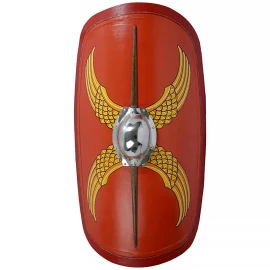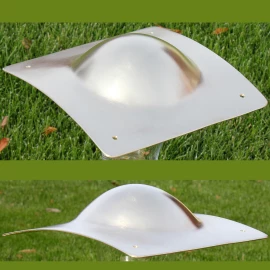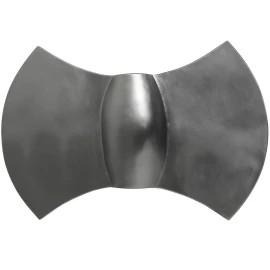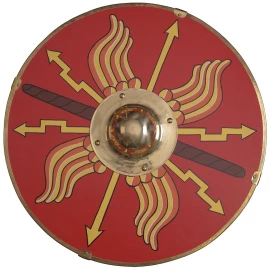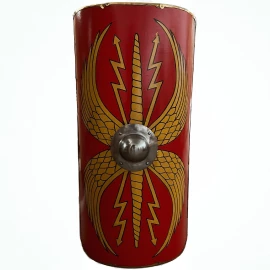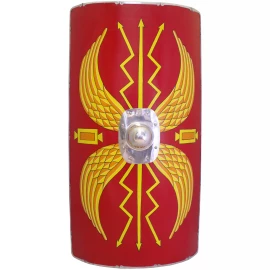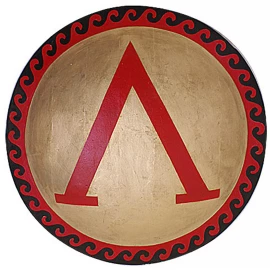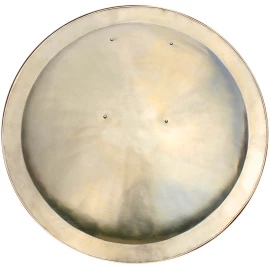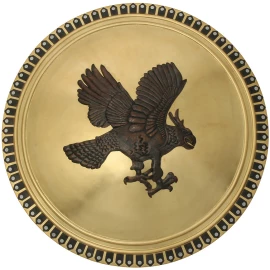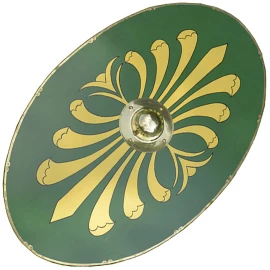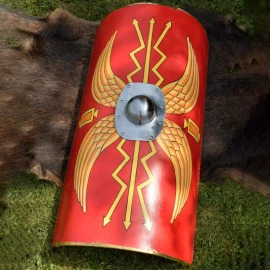Ancients shields, Scutum
Scutum is the Latin word for "shield", although it has in modern times come to be specifically associated with the rectangular, semi-cylindrical body shield carried by Roman legion. The oval scutum is depicted on the Altar of Domitius Ahenobarbus in Rome, the Aemilius Paullus monument at Delphi, and there is an actual example found at Kasr el-Harit in Egypt. Gradually the scutum evolved into the rectangular (or sub-rectangular) type of the early Roman Empire.
Filter products
Ancients shields, Scutum
By the end of the 3rd century the rectangular scutum seems to have disappeared. Fourth century archaeological finds (especially from the fortress of Dura-Europos) indicate the subsequent use of oval or round shields which were not semi-cylindrical, but were either dished (bowl-shaped) or flat. Roman artwork from the end of the 3rd century till the end of Antiquity show soldiers wielding oval or round shields.
The word "scutum" survived the old Roman Empire and entered the military vocabulary of the Byzantine Empire. Even in the 11th century the Byzantines called their armoured soldiers skutatoi (Grk. σκυτατοι).

